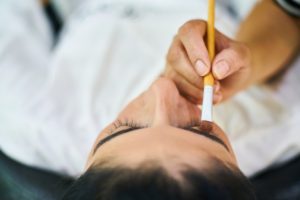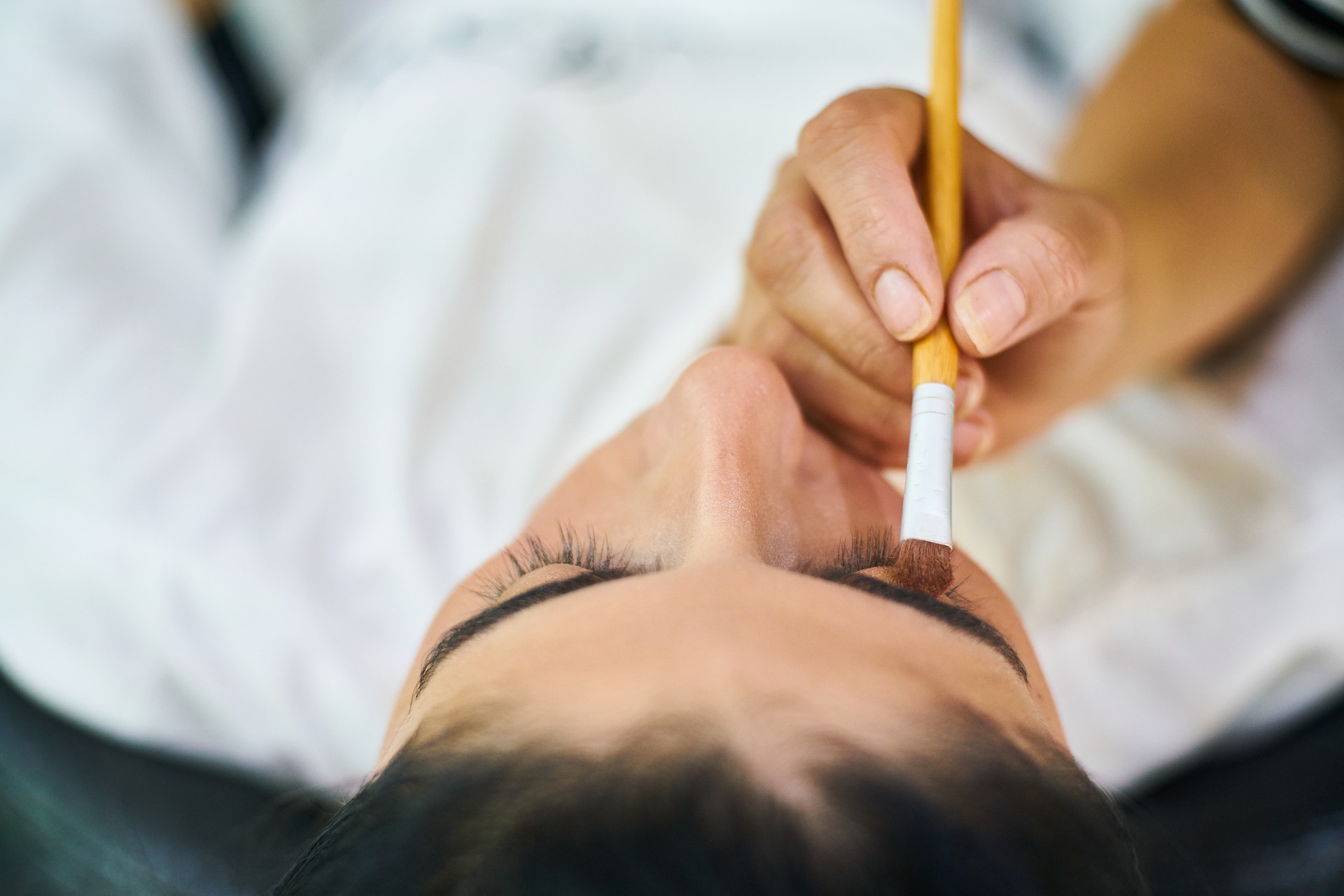The beauty market is constantly on the rise. From aesthetic procedures to makeup, professionals who work in this area are always reinventing themselves and discovering new trends to work better and attract more customers to their niche.
One of them is the eyebrow designer, who, in addition to being able to perform simpler services, such as design, can also specialize in semi-definite techniques, such as microblading and micropigmentation.
But do you know what microblading and micropigmentation are? In this post, we will differentiate these techniques and show why investing in one of them can enhance the career of an eyebrow designer. Follow up!
Microblading is a type of brow design in which the professional draws very fine strands that blend in with the natural ones — that’s why it is also known as strand by strand. Semi-permanent, the technique is made with measurements on the face, so the eyebrows must always be symmetrical.
But in addition to understanding what the technique itself is, it’s important that you discover what microblading is not! Some people confuse the procedure with micropigmentation. It’s even understandable considering that the two have the same purpose, but they differ in effect and technique — and the professional needs to be aware of this.

Micropigmentation
In this modality, the device used is the dermograph, which draws the wires through electrical stimuli. The pigmentation is more intense, giving a more striking result, with more spacing between the hairs, making the eyebrow more robust.
Here, it is important to emphasize that the more specialized the professional is, the better the service will be. Handling the device must be constantly trained until she feels safe and can use it to carry out the design.
Microblading
One of the reasons for the popularization of microblading is its result, especially for people who want a very natural result on the eyebrows. In this case, the technique brings a much more subtle design, as it allows the spacing drawn between the hairs to be smaller in relation to micropigmentation.
This creates a less noticeable aspect of the pigment, hence the name “hair by hair”.
For microblading, the device used is the tebori (which comes from Japanese and means “to tattoo with your hands”). Unlike the dermograph, the use of this device is 100% manual.
The designer pigments the eyebrows according to the symmetry of the client’s face. This procedure takes longer and usually takes up to two hours.
Dermograph X Tebori
Sometimes, what prevents a client from investing in micropigmentation or microblading is the fear of needles, as the lack of knowledge about how to perform the procedure can discourage clients. Therefore, the designer — even if she doesn’t work with both techniques — must know them, in order to explain and advise on which one is worth investing.
You can start by telling us how the dermograph and tebori work. Briefly, the tebori (microblading) is a kind of pen, with microneedles at its end responsible for making the threads. Before using it, the designer usually applies an anesthetic ointment, which considerably reduces the client’s discomfort.
The dermograph has several models on the market and is more practical. As it is electric, its action is faster, but not necessarily painless. For the designer who is investing in this technique, it is important to check if the device used is verified by the National Health Surveillance Agency (Anvisa).
Materials
In addition to the tebori, the other accessories needed to make the microblading are:
- needles;
- pencil to demarcate;
- tweezers;
- pigment.
And to do the training? Before going into the client’s skin, you need to practice. So, invest in:
- bond paper;
- EVA rubber;
- artificial skin;
- dermatographic pencils;
- tebori.
First of all, you will practice microblading on bond paper and mounted eyebrow images. When you’re good at drawing, replicate the procedure on artificial leather to practice the precision and lightness of your hand.
Needle Types
flex: flexible blades wrapped in a plastic material, which allow the design of more curved wires;
hard: made of very firm metal, the hard needles are indicated for thicker skins, as they help to have more precision in drawing the thread;
U: needles of this type have the shape of the letter U. Indicated for drawing rounder threads and are the easiest to handle;
flat and round: used to draw with taps, these blades are used to blend between the hairs or contour the eyebrows.
How to mix pigments?
See the color ratio for different types of eyebrows:
- light blonde: 5 drops light brown + 1 drop coffee brown;
- medium blond: 4 drops light brown +1 drop coffee brown;
- light brown : 4 drops light brown + 2 drops coffee brown;
- brown: 3 drops light brown + 3 drops coffee brown;
- dark brown: 1 drop light brown + 4 drops coffee brown;
- dark, almost black: 6 drops coffee brown only.
To avoid mistakes, choose a pigment with a shade above what you would use in shadow techniques. Like the finer and more delicate drawn threads, they don’t appear as much as a shadow.
Why bet on the microblading technique?
If you search for the latest makeup trends, you will likely find the following information: the natural is gaining traction.
Yes, we know that there are people who prefer more defined eyebrows. However, today the market asks for something more natural, which brings lightness to the face. In addition, people like exclusivity: they don’t want the professional to use a standard design, they want them to do something designed for each client.
The popularization of microblading, of course, reinforces this theory. As you have seen, the technique is manual and takes longer precisely to create an authentic result.
With this in mind, it is common for professionals in the area to specialize in this procedure to better understand its benefits and gain more and more customers. To help you, we describe some of them below.
Improved technique
For the designer who has been working in the field for a short time, learning the microblading technique is an excellent opportunity to improve their performance. As it is a manual job, it requires more preparation and patience from the professional.
Remember that this preparation has a 100% influence on the result and on your customer base. Therefore, the investment to master the method is essential.
In addition, microblading becomes less bothersome for clients, considering that, during its execution, there is no noise or vibration. And for professionals, there is a lower cost with electricity (unlike the dermograph).
Cost of utensils
While a dermograph can cost hundreds of reais, the tools used in microblading are much cheaper. Tebori, depending on the supplier, doesn’t even reach R$50.
Price
Generally, professionals in the field charge more to perform the procedure. One reason is that the technique is relatively new to the market. Furthermore, it requires more domain, that is, more professional investment.
Another factor is that the result is more compatible with current trends, which favors the procedure.
To price, you need to take into account several aspects:
- competition (are there many professionals around who do microblading?)
- the time of experience with the technique;
- investment in studies;
- the region in which you work;
- material costs;
- your target audience.
With so many reasons to consider, the price range is quite wide. To give you an idea, you can find professionals in the market who charge from R$500 to R$1,300. Therefore, it is possible to make a good profit, but always taking into account all the factors mentioned.
Also remember that even if you serve from a lower-income location, the procedure must be profitable and cannot be much below that range. After all, this devalues your work and investment in technique. The ideal is to investigate the competition and invest in all the differentiators of your work.
care
The healing of any aesthetic procedure depends on two sides: the professional and the client. It is up to the designer to master the technique he will use and execute it in the best way possible, as well as inform his client of the necessary care so that the result is in line with his expectations.
The problem is that the client is anxious and healing requires patience. If she is not prepared, she can go through a roller coaster of feelings, as the initial result is well marked and causes cones.
The absence of a good explanation about this entire process can influence not only the service, but also the customer’s feedback. Therefore, it is important to inform them about the use of specific products in the area, the use of sunscreen and the need to avoid exposure to the sun. Otherwise, the pigment may change in color and, worse, the region will not heal properly.
In addition, no watering of the region for the first 48 hours! Explain to her that you just applied the pigment. So, the longer she waits to move the region, the better the fixation will be.
Other essential care during healing are:
use moisturizer in the region (prevents the skin from “pulling” the pigment). It should be made with the restorative cream recommended by the designer;
- never, ever, at any time remove the cones. Pigmentation will be missed, and the region injured;
- when cleaning the skin, do not rub the pigmented part;
- avoid makeup and cosmetics in the region;
- avoid bathing in the sea, swimming pool and sauna;
- avoid too much contact with animals;
- keep your eyebrows clean;
- wash your hands before touching them;
- avoid using acids in the region.
Care during healing will be essential for the overall durability of the procedure. Therefore, the client can extend some of these habits throughout the period in which the microblading is fixed.
Duration
If the client follows all the care step by step, it is possible to obtain a more beautiful and lasting result, which can vary from 6 to 12 months. Oily skin tends to “push out” the pigment more quickly; the dry ones are able to retain the ink for longer.
However, the client will notice the fading as soon as the region heals. During this period, she loses about 30% of the pigment. In 7 months, 70% has already been eliminated. Therefore, the ideal is to do an annual retouch.
Finishing changes
A very common question is: can the designed wires get thicker after a while? Yes, it can happen because of fading — especially if the pigment used is organic.
Also, if the designer doesn’t place the pigment at exactly 90 degrees to the skin, it can look smoky and therefore thicker.
The result can also vary from skin to skin, but there is no specific reason behind this change.
Eyebrow care is gaining more and more space in the routine of those who like to take care of themselves. Undoubtedly, it is a market worth investing in and specializing in, especially in techniques such as microblading, as this has a positive impact on your profit and credibility. The professional is responsible for training in order to deliver the best possible result to his clients.

